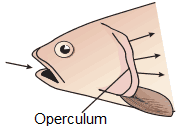After the 1930s, the international scene focused on economic development. Countries considered to be underdeveloped sought to leave this level and achieve development. For this, the natural resources of each country were explored. The hydroelectric power plants idea was encouraged worldwide in the 1930s and 1950s (Oliveira, 2018). Brazil aligned itself with this vision since it had the objective of overcoming backwardness and poverty in the country (Oliveira, 2018). For the Tucuruí Hydroelectric Power Plant implantation (THPP), located on the Tocantins River (Pará), the feasibility studies started in 1972 and this was concluded in 1984 (Cintra et al., 2013). Source: Gilbert et al., 2013).

Google Earth images of the Tucuruí Hydroelectric power plant, before (left; December 1984) and after (right; December 2016) the construction of the dam. The scale bar represents ~ 48.3 km (30 miles). Source: Gilbert et al., (2020).
The THPP construction generated several morphological changes in the environment. Currently, an area of 3513.29 km² is flooded. The THPP presence prevents the migratory flow of fish between the low and the middle Tocantins, in addition to transforming a lotic environment into a lentic one (CBM, 2000), where previously there were shallow rapids of clear water and later became a deep and muddy lake (Gilbert et al., 2020). et al., 2020).
In this year of 2020, a study was published on the morphological changes that occurred in several species of fish after the damming of the Tocantins River (Gilbert et al., For this, six species of cichlids (fish of the Cichlidae family) collected in 2018 were compared morphologically with cichlids collected in the same location before or shortly after the closure of the Tucuruí Hydroelectric Power Plant in 1984.
Changes were observed in two species, Cichla kelberi and Cichla pinima. The first developed a “deep body”, a broader body towards the back and belly than from the mouth to the caudal fin, and a larger mouth. The second was the opposite, where he developed a more elongated body. For the species Geophagus neambi and Satanoperca juruparithere were changes associated with the head morphology, such as changes in the size and positioning of the eyes, jaw length, skull dimensions, and sizes of the operculum. Caquetaia spectabilis and Heros efasciatus, also exhibited changes in the body and head morphology. Thus, we observed that, in 36 years, the presence of THPP had an impact on the morphology of the bodies of these fish species, which were forced to adapt to the new type of environment formed.

Representation of operculum in bony fish. Source: https://exerciciosweb.com.br/zoologia/ciclostomados-condrictes-e-osteictes-exercicios/
References
Cintra, I. H. A., Flexa, C. E., Silva, M. B. D., Araújo, M. V. L. F. D., Silva, K. C. D. A. 2013. A pesca no reservatório da usina hidrelétrica de Tucuruí, região Amazônica, Brasil: aspectos biológicos, sociais, econômicos e ambientais. Acta of Fisheries and Aquatic Resources, 1 (1): 57-78.
Comissão Mundial de Barragens (CBM). 2000. Usina Hidrelétrica de Tucuruí (Brasil), RELATÓRIO FINAL. 297 p.
Gilbert, M. C., Akama, A., Fernandes, C. C., & Albertson, R. C. Rapid morphological change in multiple cichlid ecotypes following the damming of a major clearwater river in brazil. Evolutionary Applications, 00:1–18. DOI: 10.1111/eva.13080.
Oliveira, N. C. C. D. 2018. A grande aceleração e a construção de barragens hidrelétricas no Brasil. Varia Historia, 34 (65), 315-346.
